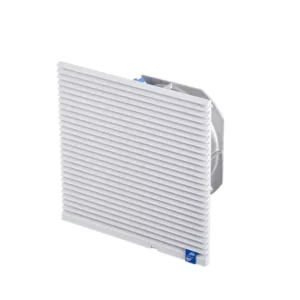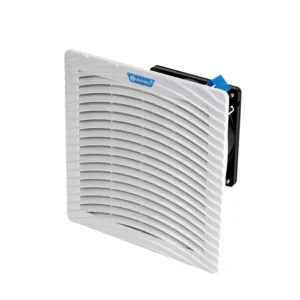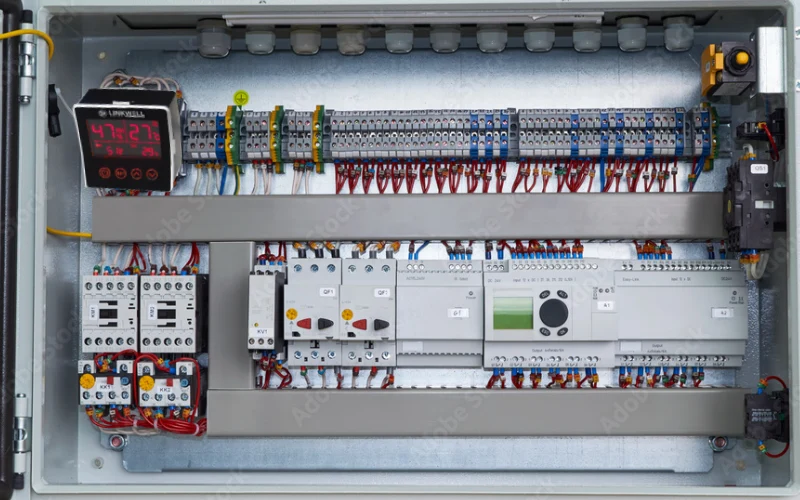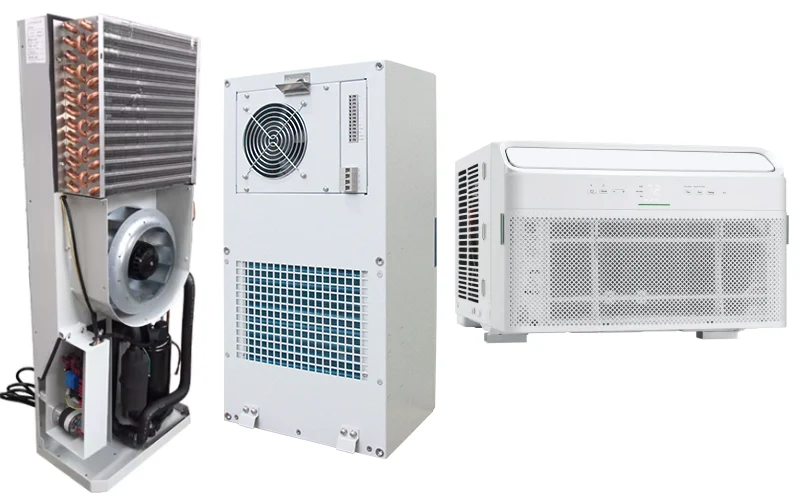What is an axial fan? It’s a simple yet powerful tool designed to move air in a straight line. As a manufacturer, I see firsthand how essential these fans are across industries, from electronics to building ventilation.
What Is an Axial Fan?
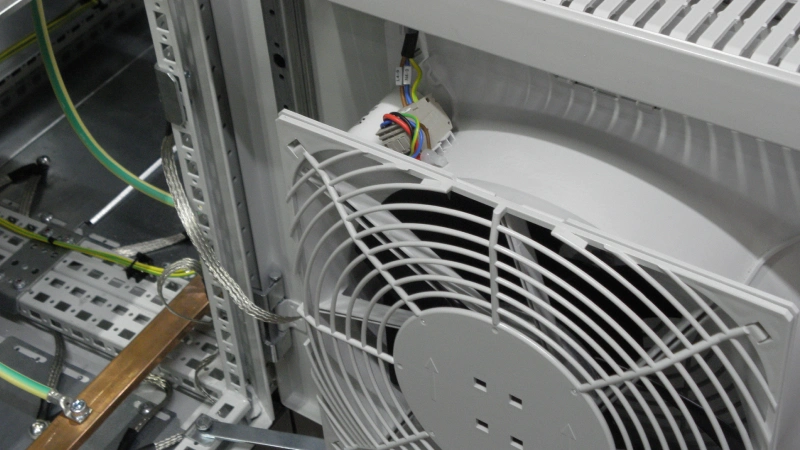
I’m often asked, “So, what exactly is an axial fan?” Simply put, it’s a mechanical device that drives air parallel to its shaft—unlike centrifugal fans, which redirect airflow radially. The blades are mounted on a hub connected to a shaft that’s powered by a motor. When it spins, air is drawn in one side and expelled the other, creating a straight-line flow. This axial movement is both efficient and compact—qualities we harness in countless custom applications.
Anatomy of an Axial Fan
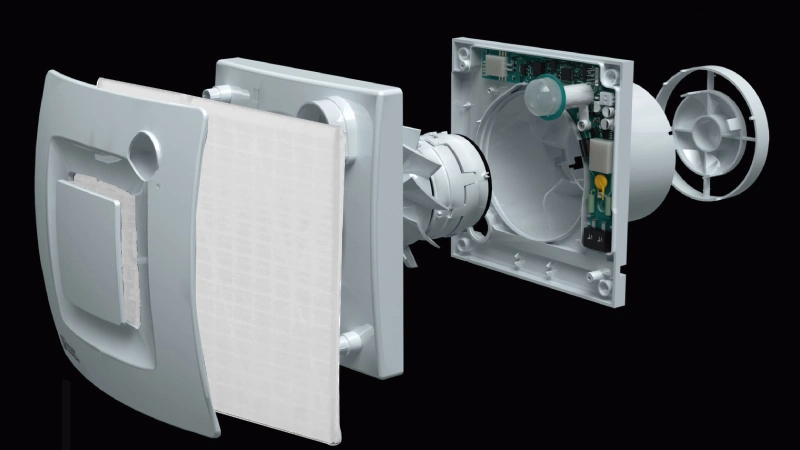
Let me walk you through each critical component:
Blades / Impeller
- Design & Airfoil Profile: Our blades sport aerodynamic profiles, akin to aircraft wings, ensuring airflow with minimal drag. We optimize blade count, chord length, and curvature for peak performance.
- Blade Pitch & Size: Pitch is vital—generally around 1° per inch of fan depth. If you double blade pitch from 10° to 20° on a 10-inch fan, you’ll notice ~15% more airflow—without extra power draw. That’s the magic we engineer.
Hub & Shaft
- The hub anchors the blades and attaches to the shaft, which spins them. A sturdy shaft—matched to motor torque—ensures long-term reliability.
Motor
- We build fans with AC, DC, or Electronically Commutated (EC) motors.
- AC fans are perfect for fixed-power environments.
- DC variants offer lightweight, battery-driven flexibility.
- EC fans combine efficiency, variable speed, and smart controls—ideal in industrial or HVAC scenarios where fine control matters.
Exit Filter
The Exit Filter IP54 is a dustproof filter specially designed for axial fans, offering reliable protection in challenging environments. With an IP54 rating, it effectively prevents the intrusion of solid particles and low-pressure water jets, extending the lifespan of internal fan components. Ideal for enclosures, cabinets, and ventilation systems, this filter ensures optimal airflow while blocking dust and debris. Easy to install and maintain, the Exit Filter IP54 is a practical solution for keeping your fan systems clean, efficient, and running smoothly—even in dusty or damp conditions.
Casing / Frame
- The casing directs airflow and lends protection. Whether cylindrical housings, tube frames, or panel fans, each enclosure serves both aerodynamics and user safety.
How an Axial Fan Works
Picture this: when the motor spins the shaft, the blades cut through air. They induce low pressure behind, high pressure in front—creating suction and thrust. This pressure differential draws air in axially, pushing it straight out the other side. Efficiency hinges on matching blade geometry, speed, and motor torque to the desired airflow and static pressure.
Performance Characteristics & the P‑Q Curve
We rely heavily on P‑Q (pressure–flow) curves to design fans for specific tasks:
- High flow, low pressure: Axial fans excel here. The curve slopes downward—higher airflow means lower static pressure.
- Swirl Stall Region: If you push beyond the sweet spot, airflow separates from the blade surface—leading to stalls that create noise and inefficiency. We engineer to keep operational points safely away from that boundary.
By optimizing blade pitch, motor speed, and housing design, we ensure each fan runs efficiently within its ideal envelope.
Comparing Fan Types
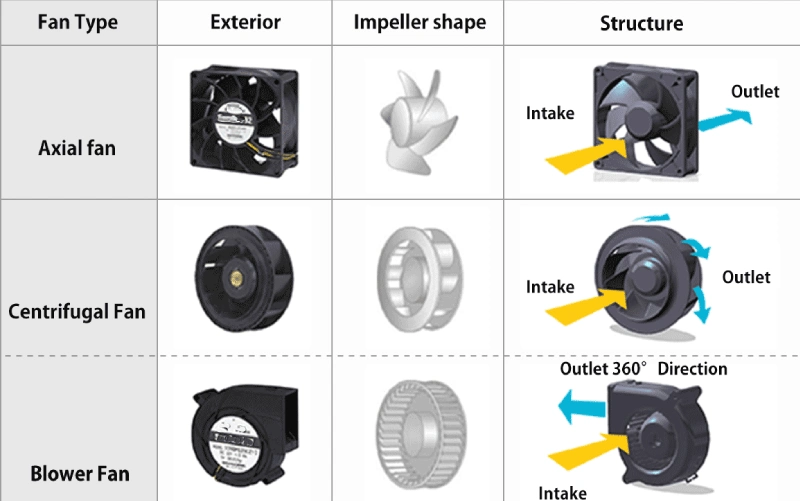
Axial vs. Centrifugal Fans
Axial fans are built to move large volumes of air along a straight, axial path—ideal when resistance in the system is minimal. Their simple, compact design makes them perfect for environments where space is limited and quiet operation is important. They’re widely used in electronics cooling, general ventilation, and fan trays.
Centrifugal fans, by contrast, move air by changing its direction—drawing it in axially and expelling it at a right angle. This change in direction allows them to build much higher static pressure, making them suitable for applications with restrictive ductwork, air filters, or high-pressure zones. However, they’re generally bulkier, heavier, and often produce more noise.
Axial vs. Cross-Flow (Tangential) Fans
Cross-flow fans blow air across a wide area using a cylindrical impeller. This results in a uniform curtain of airflow, making them ideal for applications like air curtains, HVAC units, and display case ventilation. They are especially useful where airflow coverage is more important than focused direction or pressure. However, cross-flow fans typically offer lower static pressure and airflow volume than axial or centrifugal fans, and may produce more noise at higher speeds.
Axial fans outperform cross-flow fans when space efficiency, energy consumption, and focused high-volume airflow are key requirements.
Fan Type Comparison Table
| Feature | Axial Fan | Centrifugal Fan | Cross-Flow (Tangential) Fan |
|---|---|---|---|
| Airflow Direction | Parallel to axis (straight line) | Drawn in axially, expelled radially (90° turn) | Perpendicular to impeller, across a wide area |
| Airflow Volume | High | Moderate to High | Moderate |
| Static Pressure Capability | Low | High | Low |
| Efficiency | High for low-resistance systems | High for high-resistance systems | Lower compared to axial/centrifugal |
| Noise Level | Low | Moderate to High | Moderate |
| Size & Form Factor | Compact and lightweight | Bulkier and heavier | Long and narrow |
| Typical Applications | Electronics cooling, ventilation, HVAC inlets | HVAC systems, industrial dust removal, filtering units | Air curtains, display cases, HVAC blower units |
| Installation Flexibility | Easy to integrate in tight spaces | Needs more space due to curved duct path | Requires wide but shallow mounting area |
| Cost | Generally low | Moderate to high | Moderate |
| Maintenance Needs | Minimal | Moderate (more moving parts) | Moderate |
Design Factors That Shape Performance
A well-designed axial fan balances several variables:
- Blade design: Airfoil profile, camber, and twist determine efficiency and stall resistance.
- Motor speed: Higher RPMs boost flow but increase noise. Selecting the right motor is crucial.
- Fan diameter/depth: Larger fans move more air, but demand more energy and space.
- Blade pitch: We calculate optimal pitch angles—generally 1° per inch of depth—to hit flow targets without overworking the motor.
By fine‑tuning these elements, we craft fans tailored to specific applications and environmental needs.
Types of Axial Fan Motors
Recommended products
AC Axial Fans
- Great for traditional power supplies like 120/230 V mains. Simpler and cost-effective.
DC Axial Fans
- Ideal for portable or battery-powered systems. Light, efficient, and controllable through simple electronics.
EC Axial Fans
- The premium option. These motors combine the brushless advantages of DC with built-in speed control, high efficiency, and often integrated smart features like PWM control, PMW sensors, and temperature feedback. We custom design EC fans for data centers, greenhouses, and commercial HVAC—where precision is key.
Applications of Axial Fans
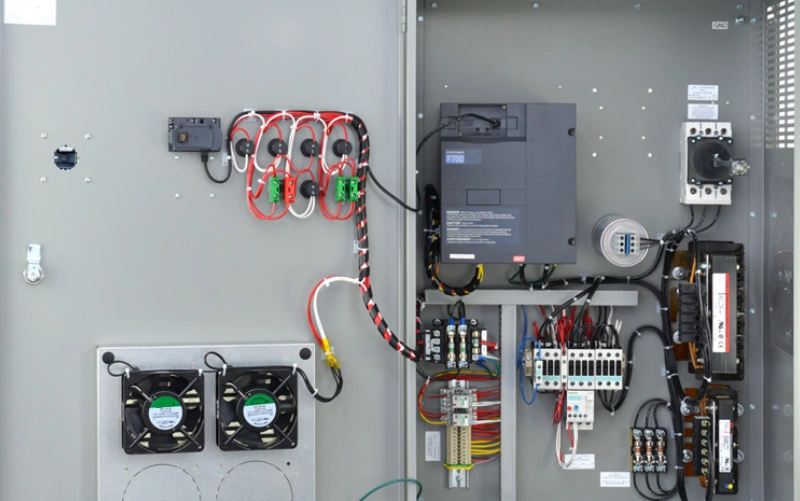
Our fans serve a dazzling array of applications:
Electronics Thermal Management
- Whether in servers, telecom racks, or power supplies, our compact fans channel airflow to cool sensitive electronics—prolonging life and uptime.
In the world of electronics, maintaining optimal temperatures is critical. Heat is the enemy of performance, and excessive temperatures can degrade components, cause system instability, and lead to premature failure. That’s where axial fans come in—and it’s a field where our fans truly shine.
Our axial fans are widely used in servers, power supplies, telecom systems, routers, and data storage units, providing essential airflow that helps regulate internal temperatures. These devices generate substantial heat during operation, especially when operating 24/7 or under heavy workloads. By directing a steady, high-volume stream of air over heat-sensitive components, our fans help prevent overheating and keep systems running smoothly.
Thanks to their compact size, quiet operation, and high efficiency, axial fans fit perfectly inside tightly packed electronic enclosures without disturbing the surrounding environment. We also offer variable speed control and temperature-sensitive models that automatically adjust fan speed to match cooling needs—delivering energy savings and noise reduction.
Whether you’re designing a data center or manufacturing consumer electronics, integrating high-quality axial fans ensures thermal performance, system reliability, and longer equipment lifespan. It’s a small investment with big returns—because in electronics, cool equals reliable.
HVAC & Building Ventilation
- In homes and offices, we place axial fans in ducts, walls, or ceilings. They balance airflow, energy efficiency, and noise—creating comfortable environments.
Industrial Cooling & Exhaust
- We design heavy-duty axial fans to clear heat, fumes, and particulates from factories, labs, and kitchens—ensuring clean, safe air environments quickly and reliably.
Automotive & Transportation
- Axial fans cool radiators, condensers, and battery packs. Lightweight and efficient, they’re ideal for under-hood or electric-vehicle use.
Agriculture & Greenhouses
- We supply fans for drying grain, ventilating barns, and circulating greenhouse air—keeping harvests and animals healthy.
Benefits of Axial Fans
- High airflow per watt: Efficient at moving large volumes with relatively low power draw.
- Compact form factor: Integrates easily into machines, enclosures, or tight spaces.
- Quiet operation: Carefully engineered blades and housings keep noise low—especially important in offices or cabinets.
- Cost-effective: Fewer components and simpler housings than centrifugal fans translate to lower production and maintenance costs.
Engineered to Excellence: How We Build Ours
As manufacturers, here’s our process:
- Needs Assessment: We evaluate airflow and static pressure requirements based on the client’s setup—size, environment, noise levels, energy limits.
- Design & Simulation: Using CFD tools, we refine blade profiles, motor selection, and casing geometry for peak efficiency.
- Performance Testing: Every prototype goes through bench tests to measure airflow, dB noise, and electrical load—verifying it meets specs.
- Redesign & Iterate: If needed, we tweak features to avoid stall, balance noise, improve longevity.
- Production Quality: Our fans pass rigorous QC checks—balancing, vibration, insulation—to guarantee reliable performance over thousands of run-hours.
Care & Maintenance Tips
- Dust screening: Filters or mesh help protect blades and motor from debris.
- Bearing lubrication: Regular maintenance can extend lifespan—especially in dusty or humid environments.
- Vibration monitoring: Even subtle imbalances can cause premature wear—use sensors where needed.
- Variable speed control: Pairing with controllers ensures fans operate efficiently under changing conditions—with reduced noise and power demand.
Future Trends in Axial Fan Technology
We’re innovating in several exciting areas:
- Smart fans: Spinner-integrated sensors monitor temperature, vibration, and airflow—and adjust speed in real-time.
- EC motors: Becoming standard across applications for their efficiency and control advantages.
- Advanced materials: Carbon-fiber or composite blades improve strength-to-weight ratio and lower acoustic output.
- Eco-conscious design: We’re introducing recyclable materials and low-emission production processes.
Real-World Case Studies
Server Cooling Solution
We designed a custom EC axial fan for a data center startup. Specifications: 250 mm diameter, 8-blade composite housing, 0.3 kPa static pressure, and built-in PWM and tach output. Outcome: IT managers noted 18% lower rack inlet temperatures and 12% energy savings.
Commercial Kitchen Exhaust
We built a 450 mm axial exhaust fan with stainless steel housing and high-grade IP55 motor. It moved 15,000 CFM while staying under 70 dBA. The kitchen owner praised its quiet, efficient ventilation—supporting a healthier workspace.
FAQs
Q1: What static pressure range do axial fans handle best?
A: Typically up to 0.5–1.0 kPa. For higher pressures (>1 kPa), centrifugal fans are more appropriate.
Q2: Can axial fans be variable speed?
A: Absolutely! DC fans use PWM. EC fans offer onboard speed control. AC fans can use VFDs, though we often steer clients toward EC for flexibility and efficiency.
Q3: What lifetime can I expect?
A: With sealed or sleeve bearings, expect 20,000–40,000 hours. Ball bearings can stretch that to 60,000+ hours.
Q4: How loud are these fans?
A: Depends on size and speed. A 120 mm fan at ~2000 RPM runs around 30–35 dBA. Large industrial fans (~500 mm) might hit 65–70 dBA—still lower than many centrifugal alternatives.
Q5: Can I retrofit an existing system with your fans?
A: We offer drop-in replacements and custom configurations—same bolt patterns, voltage, connectors—you name it.
Q6: Are axial fans energy-efficient?
A: Yes—especially EC fans, which convert up to 65–70% of electrical input into airflow, versus ~40–50% for standard AC fans.
Conclusion
Linkwell As the manufacturer behind every blade and motor, I’m proud of the role our axial fans play across industries—from cooling data centers to ventilating greenhouses. We continually innovate—crafting fans that are smarter, quieter, and more efficient, while staying rugged and reliable. If you’re looking for bespoke airflow solutions—whether for electronics, buildings, agriculture, or industrial systems—I’m here to help you find or custom-design the right fan.

